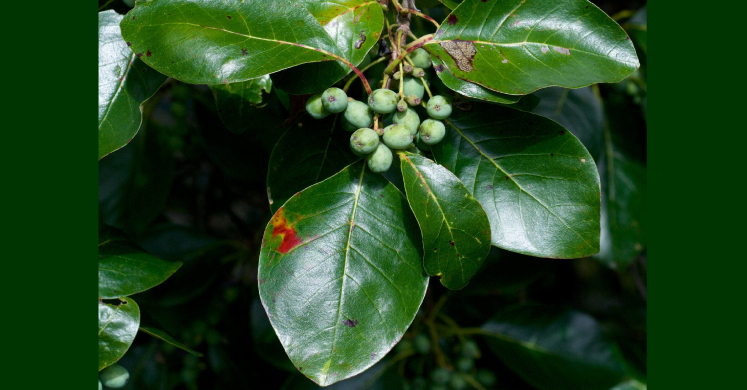Blog

#bioPGH Blog: Blackgum Trees
 A resource of Biophilia: Pittsburgh, #bioPGH is a weekly blog and social media series that aims to encourage both children and adults to reconnect with nature and enjoy what each of our distinctive seasons has to offer.
A resource of Biophilia: Pittsburgh, #bioPGH is a weekly blog and social media series that aims to encourage both children and adults to reconnect with nature and enjoy what each of our distinctive seasons has to offer.
Perhaps not as showy as the tulips and daffodils we associate with spring, another currently blooming plant is the blackgum tree! Widespread in the Eastern US, blackgum trees (Nyssa sylvatica) have some geographical variation in size and shape; and, as with many a widespread plant species, blackgum also spelled black gum, has many names and can be regionally called black tupelo, tupelo gum, sourgum or yellow gum (and ironically, with no relation to sweet gum tree). But like a rose by any other name, a blackgum tree is just as important no matter what it’s called! Let’s learn a few of those reasons why, shall we?
First! Blackgum trees, whether wild or cultivated, are ecologically important to wildlife. If you have looked loosely at blackgum trees in the summer before, you may have noticed green “berries” hidden amongst the leaves. If you were to look again in the fall, those green fruits turn a deep blue as they ripen (the fruits look like tiny berries, but botanically speaking, they are actually drupes, like peaches or plums). These fruits are an important source of food for wildlife, particularly as migration diet items for birds, as the fruits are available by mid-late September in temperate areas.
Ranging from 30–75 feet tall, blackgum trees are great shade tree for human communities. Not only do they have attractive dark, shiny leaves in the summer, but they also turn brilliantly vibrant colors in the fall. Arborists note that they develop a strong tap root system as they mature. So, if you do opt for a blackgum tree, be sure that it is situated where you want it long-term — transplanting probably won’t be an option!
On a sobering note, I will add that blackgum trees are also significant for another reason: their migration northward in response to climate change has been visible since as early as 2007. Blackgum trees in the northernmost portion of their range have increased in new growth and population density since the 1980s while blackgum trees in the southernmost portion of their range have shown a marked decrease in new growth and a decrease in existing population density in that same time frame. Though northward migrations were an early prediction of ecological climate responses, blackgum trees are an early example of the accuracy of those predictions. But! The good news is we don’t have to be resigned to climate change. Check out our web page for tips about tackling climate change at home, and be sure to keep the conversation going. The vast majority of Americans know climate change is happening, we just need to keep working towards collective action. We’ve got this!
As the season continues to warm up and beckon us out to parks and trails, keep your eye out for blackgum! It may not have the mythological background of oaks or the syrupy goodness of maple, but it’s still the perfect tree for its ecological niche.
Connecting to the Outdoors Tip: This video below has some great tips to identify blackgum trees!
Resources
University of Kentucky Extension: Nyssa sylvatica (Blackgum)
Arbor Day Foundation: Black Tupelo
North Carolina State Extension: Nyssa sylvatica
Image Credits: Header, Gerd Eichmann CC-BY-SA-4.0; cover, Eric Hunt CC-BY-SA-4.0

